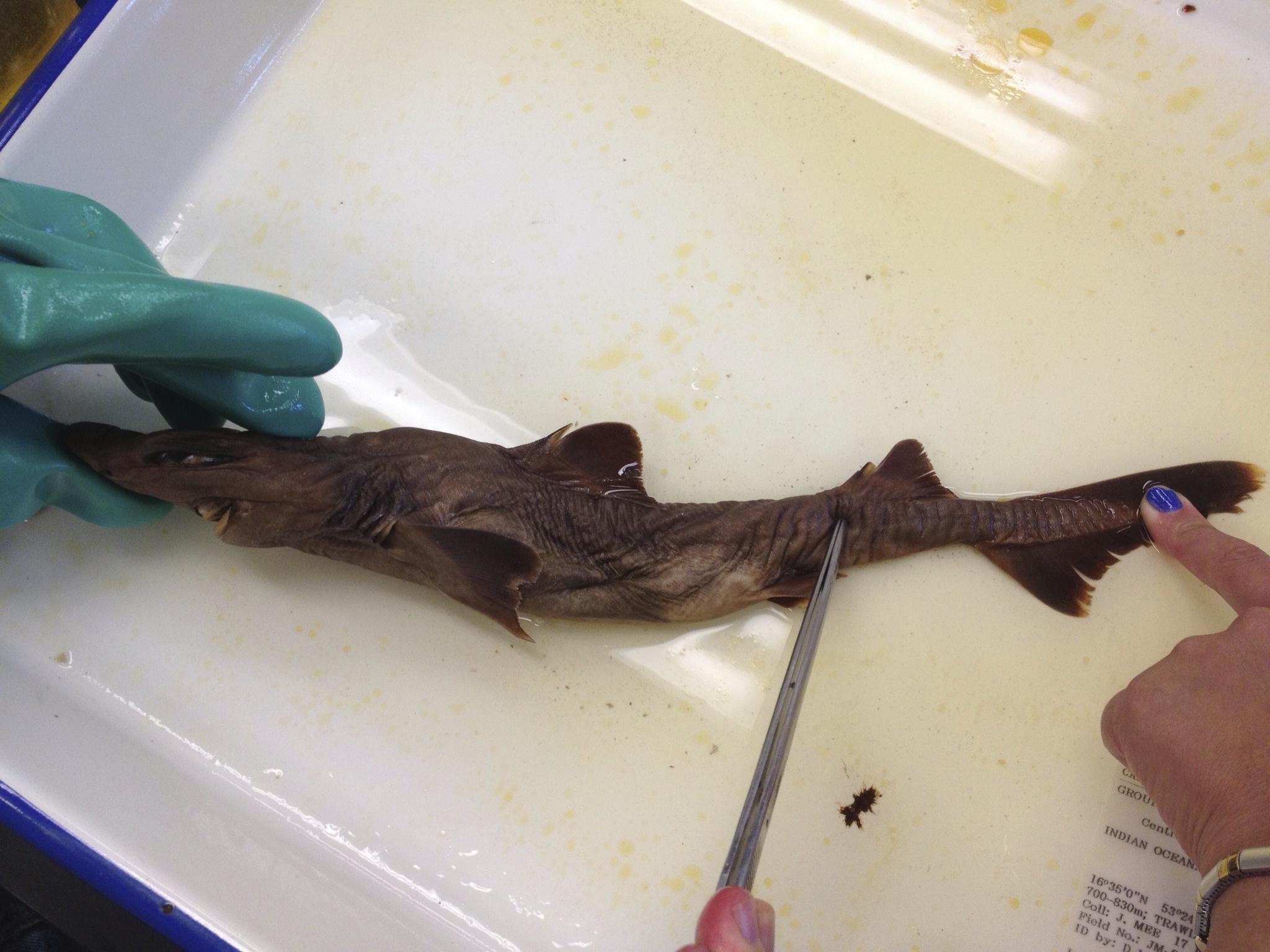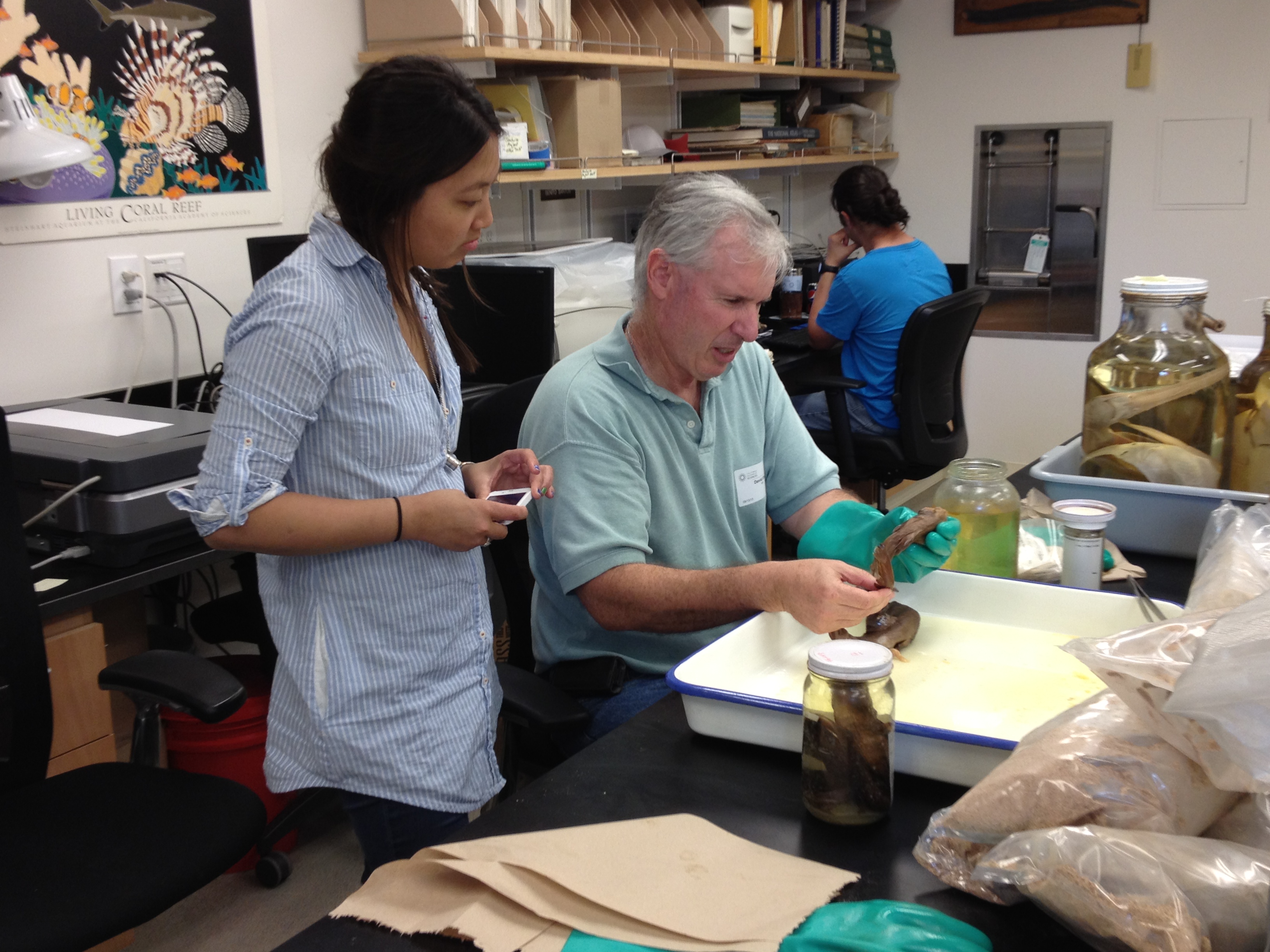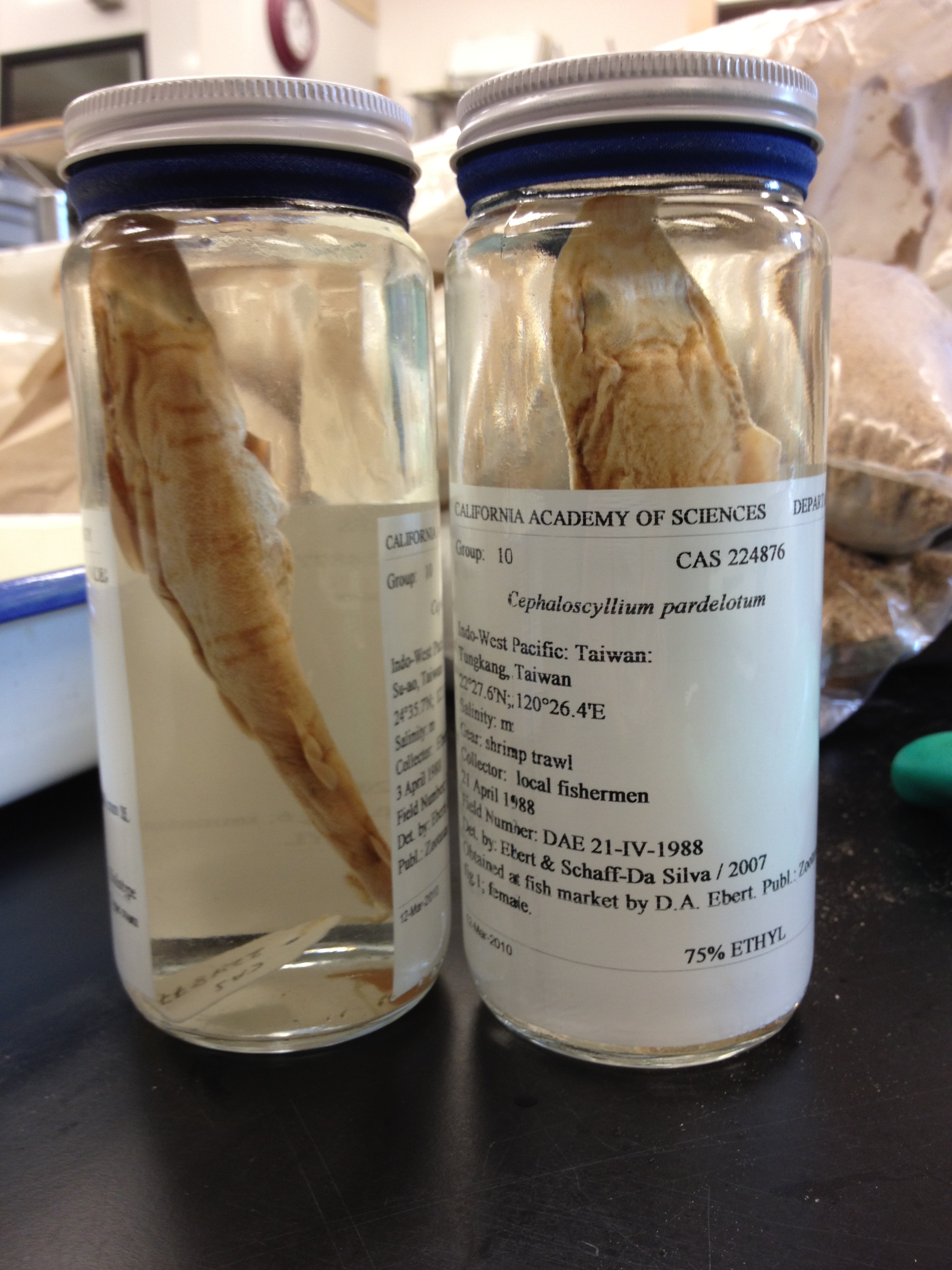By Kristin Walovich
Fellow grad student Catarina Pien and I were lucky enough to visit to the California Academy of Science in San Francisco to check out their extensive museum collection, home to nearly 1.2 million specimens! We were on a mission to observe a variety of sharks, rays and chimaeras and to bring back specimens on loan from the South African Museum. We were greeted on a foggy San Francisco Friday by Dave Catania, the senior collections manager for the Department of Ichthyology.
The California Academy of Science (CAS) Department of Ichthyology houses one of the largest and most important research collections of fish in the world. There are nearly 200,000 jars of preserved fish in the collection, representing nearly 11,000 different species. That is more than a third of fish known to science!
By looking up the unique identification number assigned by CAS, our guide Dave was able to bring us a whole cart of jars filled with old and unique animals. Catarina is working on a project to describe the sharks and rays from Oman, a country to the south east of Saudi Arabia. She photographed several specimens, including this Gulper Shark, to compare to other specimens from the region.

Just like a library, scientists can check out specimens from the museum like a book on loan. I was lucky enough to do just that with a new species of chimaera from the South African Museum. Chimaeras, or ghost sharks, are deep water fish with a skeleton made of cartilage, making them close relatives of sharks and rays.
When a new species is discovered a single animal is chosen, called the holotype, to represent the entire species. From this one animal I will record dozens of body measurements, take photographs and make observations in order to identify this chimaera to other scientists. After the specimen is described it will be added to a museum collection like the one at CAS for other scientists to observe in the future, a process called accession.
 Proper identification and detailed observations are very important when describing a species. Take for example these two species of small catsharks from the Indo-Pacific Ocean. They are very similar in size, color and shape, but because they are available for scientists to look at, subtle differences start to emerge. Without detailed records and a holotype, identifying sharks (or any animal for that matter) can be difficult.
Proper identification and detailed observations are very important when describing a species. Take for example these two species of small catsharks from the Indo-Pacific Ocean. They are very similar in size, color and shape, but because they are available for scientists to look at, subtle differences start to emerge. Without detailed records and a holotype, identifying sharks (or any animal for that matter) can be difficult.
With jars in hand and our camera memory cards full, we make our way back to Moss Landing Marine Labs for more photos, notes and measurements.



